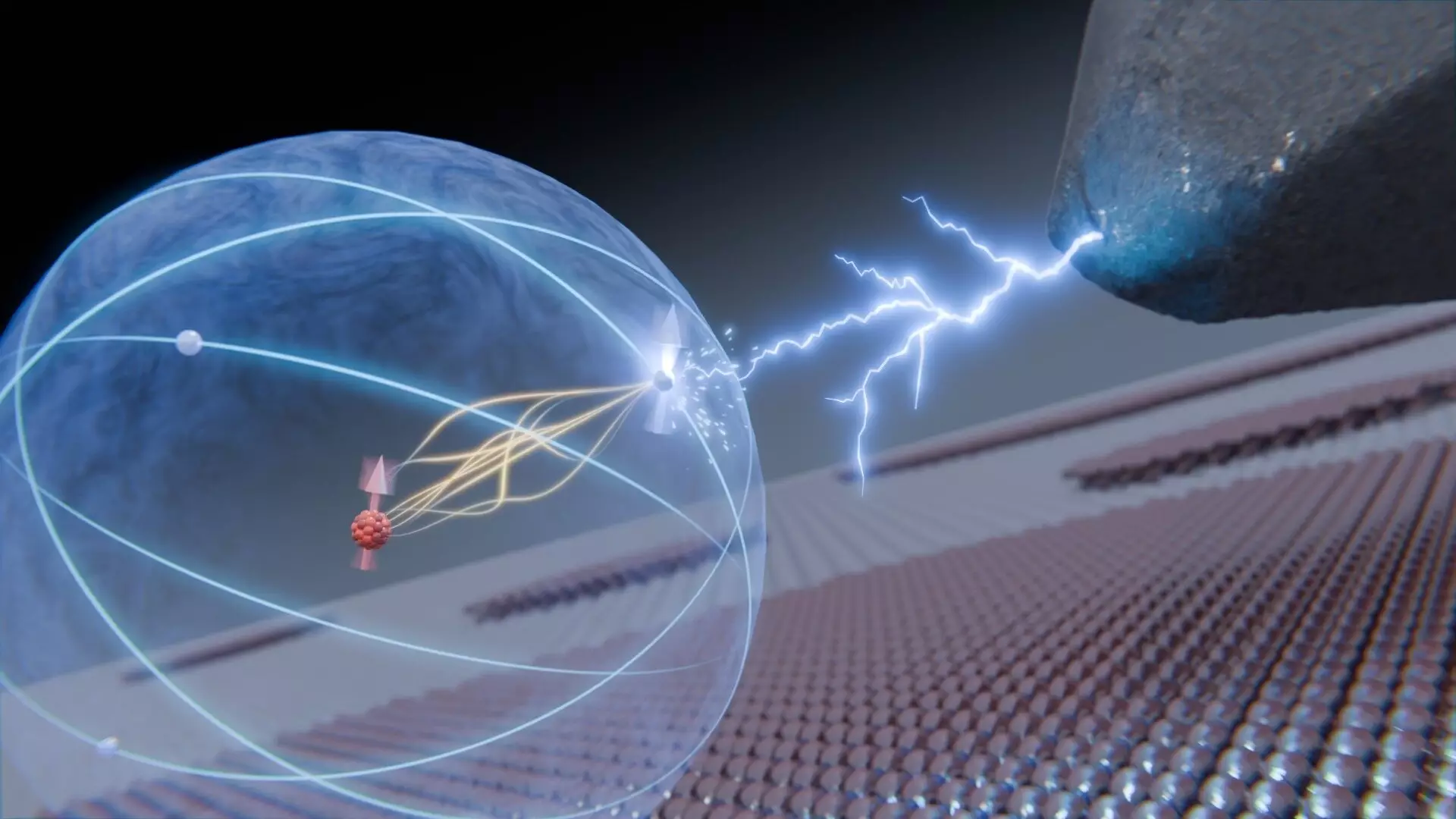Recent advancements by researchers at Delft University of Technology highlight an extraordinary leap in our understanding of atomic structures and their potential for quantum information storage. This pioneering study, documented in *Nature Communications*, successfully established controlled interactions between the atomic nucleus and its surrounding electrons, shedding light on a realm that teeters on the edge of quantum mechanics and practical applications.
The core of the research involved a specific titanium isotope, Ti-47, which possesses unique properties given its neutron configuration. Kenneth Otte, leading the research team, articulates the significance of Ti-47 being slightly magnetic due to its missing neutron, thus creating a phenomenon known in quantum physics as “spin.” This spin functions akin to a compass needle, giving orientation to quantum information crucial for advancements in quantum computing and information technology.
Delving into the complexities of this experiment reveals just how delicate and intricate atomic interactions can be. The atoms exist within a vast void surrounding the nucleus, shielded from external influences, except for the subtle hyperfine interaction between the nuclear spin and electron spin. As elucidated by Lukas Veldman, who earned honors for his work on the project, manipulating these spins is no trivial matter. The hyperfine interaction is notoriously weak, making precise control within a finely tuned magnetic field an absolute necessity.
The research team painstakingly adjusted experimental conditions to stimulate these spins effectively. By employing a voltage pulse, they could displace the electron’s spin from equilibrium, initiating a beautiful dance between the spins of the electron and nucleus, lasting mere fractions of a microsecond. Remarkably, these fluctuations aligned perfectly with theoretical predictions established by quantum mechanics, particularly those articulated by Schrödinger.
Quantum Information Preservation
Perhaps the most striking implication of this study is the successful demonstration that quantum information—essentially encoded in the orientation of the nuclear spin—remains intact during interactions with bonding electrons. This finding is pivotal. It implies that the nucleus could serve as a secure vault for quantum information, effectively insulating it from external disturbances. Such qualities are vital for developing robust quantum computing systems that thrive on stability and precision.
Moreover, the work at Delft University is not merely an academic exercise but a stepping stone for practical applications. With the potential to shield quantum information from environmental interference, researchers are edging closer to realizing viable quantum computing elements. This revelation could have profound implications across various fields, from cryptography to complex computational systems.
While the prospect of quantum information storage drives the experimental agenda, Otte passionately notes that their research represents a transformative influence on matter at an inconceivably minuscule scale. As we inch closer to mastering the subtleties of atomic behavior, the implications for science and technology become ever more intriguing. The accomplishment marks not only a new chapter in quantum physics but also a reminder of how far our understanding of the atomic world has come—and how much further it can still go. This research stands as a testament to human ingenuity in unraveling the mysteries that govern the fabric of our universe.

